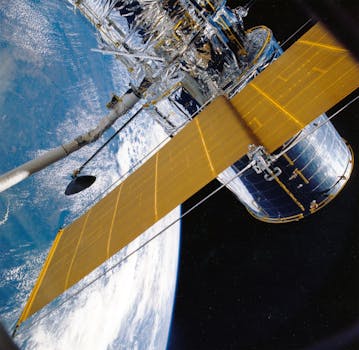
Updates from Above: Essential Insights into the Latest in Satellite Telecommunications
Satellite telecommunications, a crucial component of modern communication systems, continues to evolve, offering improved services, expanded coverage, and innovative technologies. The Focus Keyword: Satellite Telecommunications is at the forefront of these developments, shaping the future of global connectivity. This article delves into the latest updates, trends, and insights in the satellite telecommunications sector, providing readers with a comprehensive understanding of the current landscape and future directions.
Advancements in Satellite Technology
Recent years have witnessed significant advancements in satellite technology, including the launch of high-throughput satellites (HTS), the development of reusable rockets, and the integration of artificial intelligence (AI) and machine learning (ML) algorithms. These advancements have enhanced the efficiency, capacity, and flexibility of satellite telecommunications, enabling the provision of high-speed internet services, mobile connectivity, and real-time data transmission to remote and underserved areas.
The introduction of Low Earth Orbit (LEO) satellites has been particularly notable, as they offer lower latency, higher speeds, and improved signal quality compared to traditional Geostationary Orbit (GEO) satellites. Companies such as SpaceX, OneWeb, and Amazon’s Kuiper Systems are at the forefront of LEO satellite constellation development, aiming to provide global coverage and bridge the digital divide.
Expanding Services and Applications
The satellite telecommunications sector is expanding its services and applications, catering to diverse industries and use cases. Internet of Things (IoT) connectivity is a growing area of focus, with satellite-based solutions enabling the monitoring and management of remote assets, such as industrial equipment, vehicles, and environmental sensors. Additionally, satellite telecommunications play a critical role in disaster response and recovery, providing emergency communications and connectivity in areas affected by natural disasters or conflicts.
The maritime and aviation industries also rely heavily on satellite telecommunications, with services such as ship-to-shore communication, navigation, and weather forecasting. Furthermore, satellite-based Earth observation is becoming increasingly important for applications like environmental monitoring, crop management, and urban planning.
Global Connectivity and Regulatory Frameworks
As satellite telecommunications continue to advance, global connectivity and regulatory frameworks are being reevaluated to accommodate the growing demand for satellite-based services. The International Telecommunication Union (ITU) plays a crucial role in regulating the use of satellite frequencies and orbits, ensuring that satellite operators comply with international standards and guidelines.
Moreover, governments and regulatory bodies are implementing policies to facilitate the deployment of satellite constellations, such as the Federal Communications Commission (FCC) in the United States, which has established rules for the licensing and operation of LEO satellites. These regulatory frameworks aim to promote innovation, ensure safety, and protect the environment while enabling the expansion of satellite telecommunications.
Conclusion and Future Outlook
In conclusion, the satellite telecommunications sector is undergoing significant transformations, driven by technological advancements, expanding services, and evolving regulatory frameworks. As the demand for global connectivity and high-speed data transmission continues to grow, satellite telecommunications will play an increasingly important role in bridging the digital divide and enabling innovative applications.
The future of satellite telecommunications holds much promise, with ongoing research and development focused on improving satellite design, propulsion systems, and signal processing. As the industry continues to evolve, it is essential to stay informed about the latest updates, trends, and insights in satellite telecommunications, ensuring that stakeholders are well-equipped to navigate the opportunities and challenges that lie ahead.




